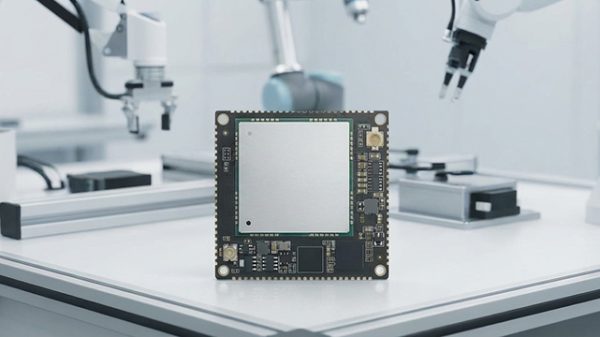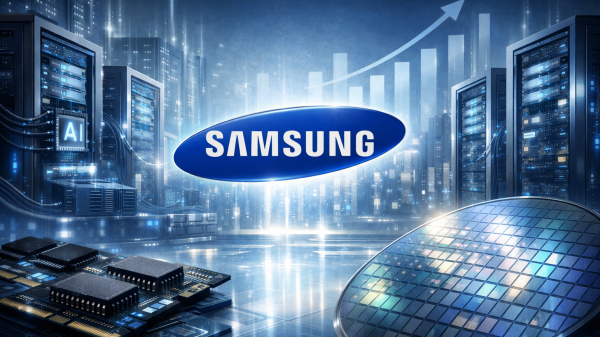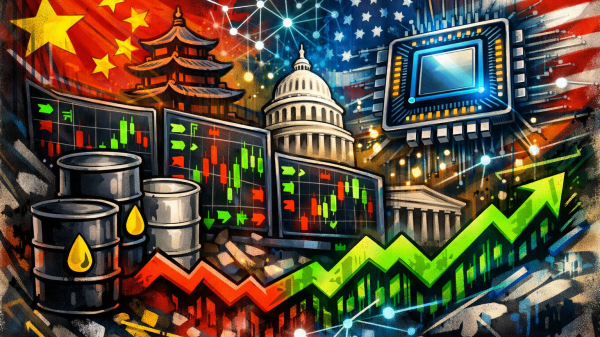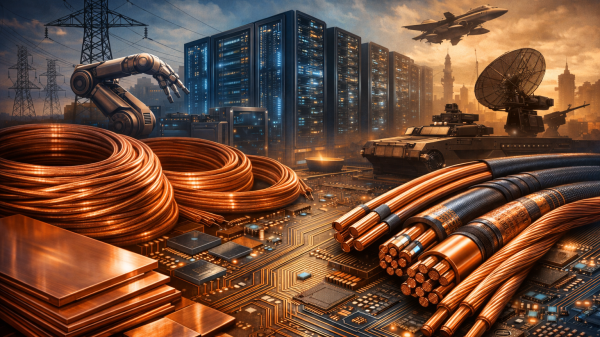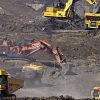Industrial researchers are sounding the alarm as thousands of AI companies are being eliminated in the wake of the first wave of AI fever sparked by OpenAI.
At the same time, however, prominent tech leaders and Silicon Valley CEOs such as Jensen Huang continue to promote the narrative of China’s technological leadership in AI. While it is understandable that hardware manufacturers may emphasize growth potential in China for commercial reasons, it is more puzzling to see segments of US media and academia amplifying what increasingly resembles a state-driven narrative. This disconnect warrants closer scrutiny — not just of China’s capabilities, but of how narratives around them are constructed and disseminated globally.
It was the Soviet Union that launched the first artificial satellite Sputnik into space, on October 4, 1957. And then three months later, on January 31, 1958, the US launched the Explorer I, making it the second country in the world that could send a satellite into space. No one cares who was next, especially when the third country was France, and especially when its first satellite wasn’t launched until November 1965 — nearly eight years later. When I asked ChatGPT why this is the case, it put it simply: “History remembers the winner, not the runner-up, let alone the third place.”
Fewer people remember that in the late 1950s, there was another country obsessed with launching satellites: China.
At the time, under Mao Zedong, China was one of the poorest countries in the world. Yet my grandfather, who was a team leader in a rural production unit in northern China, recalled how everyone was talking about “launching satellites.” My grandfather was no college graduate or rocket scientist. And of course, they weren’t launching real satellites — they were referring to faking economic data.
During the Great Leap Forward, “launching a satellite” became a euphemism for exaggerated production figures. If an acre of land supposedly produced 10,000 kg of rice, a satellite had been launched. If a pig farmer claimed he raised a pig the size of a Volvo car, and it made national headlines — another satellite was launched. And the worst part? Everyone believed it. Even Mao himself.
That’s why, despite widespread famine, Mao refused to believe food shortages existed. Instead, he was more concerned about what to do with China’s “excess” agricultural production. And since China had “plenty” of food, he decided to send free grain to its Communist allies, such as Romania and Albania, even as millions of Chinese starved. That’s exactly what he did in 1960 during the three years of great famine which resulted in the death of approximately 20 to 40 million people.
Fast forward to today. Since DeepSeek CEO Liang Wenfeng was invited to a meeting with China’s Premier Li Qiang earlier this year, its chatbot has been widely talked about and considered a competitor of OpenAI’s ChatGPT. Meanwhile, my French colleagues and American friends kept asking me about Chinese AI products with strange names. And I couldn’t help but think of the Great Leap Forward and its “satellites.”
As much as I’d wish China could lead in AI, I am not convinced.
Here’s a three-part explanation:
What Does AI Mean to China?
AI is a powerful tool, a symbol of technological advancement, and a potential driver of economic growth. But that’s not why China is investing heavily in AI.
China is betting on AI for one reason: great power competition.
In Silicon Valley, there’s a concept called FOMO — “Fear of Missing Out.” Investors fear missing the next big opportunity. But in geopolitics, nations fear missing the next big strategic advantage. China develops AI not because of domestic demand, but because the US is doing it.
The same logic explains many of China’s past industrial pushes. Great power competition is why China developed its nuclear bombs and hydrogen bombs, why China also was blamed for overcapacity in solar panels and infrastructure of 5G telecommunication. In developing nuclear weapons, China was fearful that missing out would be equivalent to dying out. It had to develop its own nuclear weapons to survive in a volatile global environment. Fortunately, when it comes to overproducing solar panels or 5G base stations, what’s at stake is not life or death.
AI in China is following the same pattern: a copycat breakthrough sparks mass investment, a semi-commercialized product grabs nationalist attention, but in the end: fraud is exposed, resources are wasted, and bubbles burst.
China Faces Institutional Barriers to AI Leadership
Just like the roaring years of personal computers and the Internet, Silicon Valley tech geniuses, angel investors, and early adopters of cutting edge technology are indispensable in AI development. But many people in the West overlook the institutional environment for developing technology. Silicon Valley’s AI boom was not just about talent, money, or research. It was about a unique institutional environment that fosters risk-taking, open data, and creative destruction.
China’s biggest obstacles to developing technology have never been a lack of talent or resources, but the lack of a free environment. What holds China back is censorship, a lack of tolerance for failure, and an intrinsic disgust for entrepreneurship.
Censorship also impedes AI growth. Chatbots such as ChatGPT can draw on 95 percent of the information on the Internet that is English, whereas its Chinese counterparts can only utilize a small portion of the information on the Internet due to the Great Firewall that isolates China from the rest of the world. There are complexities: few Chinese users speak English, the Chinese language is a high-context language, and the Chinese language has been highly polluted because of censorship (for example, there are over 3,000 ways of referring to a political figure without directly naming him). Chinese chatbots are a lot like a middle-aged political prisoner who constantly minces words, dodging sensitive topics, or simply refusing to respond. This environment also restrains the training sources for Chinese chatbots. As people say, garbage in, garbage out. If this is the kind of AI advantage we see in Chinese AI products, I don’t know what kind of intelligence we are talking about.
China has no shortage of technical talent. But AI isn’t just about technical skill — it’s about curiosity, questioning assumptions, and challenging authority. Whereas Silicon Valley thrives on disruption, China’s political culture fears it. Startups need freedom to experiment, but China’s AI strategy is heavily state-directed.
China develops AI as if it were going through another Great Leap Forward. How do I know? I checked some white papers on AI development, and my oh my, can you believe that China had an AI development roadmap back in 1979? And can you believe that by the end of last year, there were over 4311 leading artificial intelligence enterprises in China? Yes, it is only high-performing Unicorns that lead, but 4,311? I bet most of these companies are not developing AI, just like many solar panel producers in the early 2000s were footwear producers before government subsidies and supportive policies kicked in.
Therefore, I think China’s AI leadership is highly exaggerated.
AI’s Application Compared to the Input is Infinitesimal
AI will not help China’s economy — it will hurt it. AI is created for a reason, and if that reason is to assist human beings, not surpass human beings, its application is reasonable and acceptable. AI is, at best, human-like in its capabilities, or at worst, a powerful tool like a computer or a calculator, or a self-driving car. AI will, for the foreseeable future, substitute for humans in doing tedious, repetitive, and non-essential tasks. If we use AI in factories, shops, or restaurants, fewer workers, cashiers, or waiters are needed. Good. But we wouldn’t want to use AI in situation rooms, in UN Security Council meetings, or in nuclear weapon facilities.
In economic history, technological advances have driven higher productivity. The West became wealthy largely due to the Industrial Revolution, while China’s rise was primarily fueled by offshoring and outsourcing of those same functions. The West will need to get by with fewer workers, especially hard laborers, but in China, it is not a desirable thing to replace human labor with AI. China’s population numbers 1.4 billion, over half in cities and mostly without a high school education. At least one third of them need jobs — not high-paying programming jobs, but relatively low-paying, low-tech jobs — to survive.
Recently, an article made its rounds in Chinese media with a title something like “AI civil servants take office, completing three months’ worth of work in just three days.” The civil servant who wrote this article soon realized the irony and withdrew it. Being a civil servant in China is a relatively fancier job than being a factory worker or a shopkeeper. But any economist will tell you that civil servants don’t create wealth — they live on taxpayer money. And Chinese civil servants spend most of their time not working for taxpayers’ interests, but attending meetings, study sessions, and writing journals listing how they have benefited from those study sessions. By far, the most effective use of AI in China, I dare say, is civil servants using chatbots to write pages and pages of “Party Member Study Notes.”
Creating jobs, not reducing jobs with AI, is a more urgent issue for the Chinese government. If you’ve visited China, you might discover some very interesting and unfathomable jobs. For example, there are still “elevator operators,” people who press the button in an elevator. There are actually businesses called “Computerized Fortune Telling and Naming Services” (I swear I’m not making this up), where computers are used to predict fortunes or generate names for newborns — likely among the earliest commercial computer applications in China. You can still see such shops in big cities like Beijing or Shanghai. Such odd jobs indicate that the application of technology can be so different than what’s intended for the technology when it’s created. And China simply cannot afford to replace human jobs with AI.
Shortly after the conclusion of the Two Sessions, the graduation season will arrive. According to forecasts from China’s Ministry of Education, 12.22 million university students are expected to graduate and enter the job market in the spring and summer of 2025. In 2024, China saw 11.79 million university graduates, marking what was already recognized as the “toughest job market in history.” With an even larger number of graduates in 2025, finding employment is expected to be even more challenging than last year. Many of these university graduates are not going to want to do factory jobs, they want to work in offices, but AI can increasingly replace office workers nowadays. Add the university graduates to the already underemployed workforce in China, and any rational decision maker will think twice before embracing AI.
What Is China’s AI Future?
This round of AI fever might generate one of three scenarios for Chinese AI.
Application of AI is very much limited to certain areas, such as military or economic planning, stimulating another round of discussion about “socialist calculation” and the possibility of planned economy. In the meantime, a skeletal, censored version of AI is commercialized for the consumer market, isolated from the outside world, and heavily censored. How heavily? That is a top secret since officially, there is no censorship in China at all.
Regulations catch up, and AI is banned in labor-intensive industries to protect jobs. Discussions of whether a company should still be forced to pay into state pensions when they replace workers with AI or robots is already underway. It’s ridiculous, but it is happening.
China treats AI like the Apollo Program — a political prestige project. The actual mechanics of AI are at least successful enough to bridge the hype until China moves on to its next ‘global leadership’ project (perhaps Mars exploration, just because the Americans are pursuing it) But AI will not be heavily put to use in schools, government agencies, or factories, as its appearance, rather than its functionality, will be paramount.
True, China might be charging ahead in areas such as computer vision, facial recognition, and AI surveillance. Yes, Chinese companies such as Alibaba and Tencent have integrated AI deeply into daily life via e-commerce and fintech. And sure, China has heavily invested in AI talent and chips. But China is not going to lead in AI, because its powerful institutions do not allow it to lead, only to follow.


